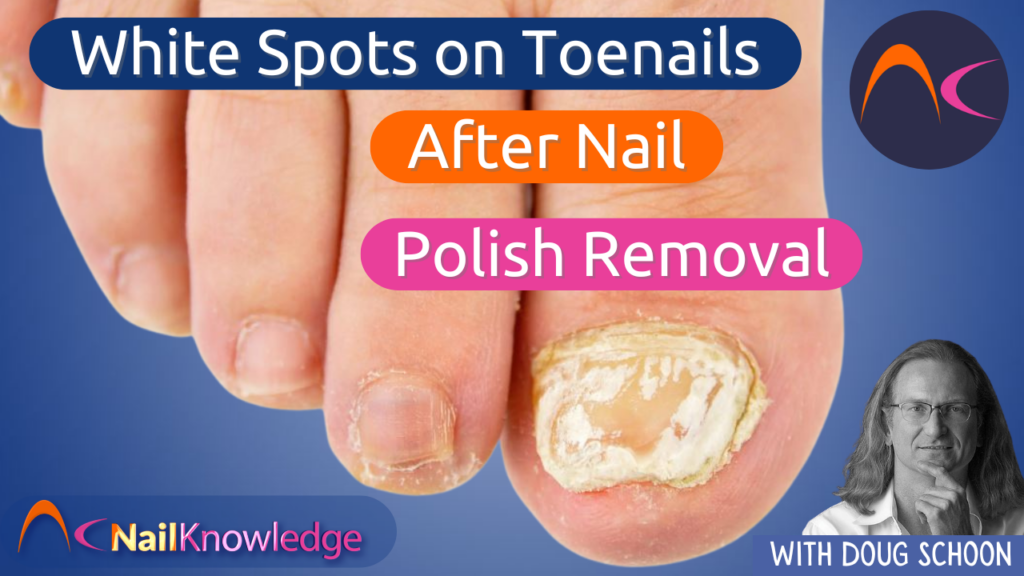A user recently asked, “What is the fuzzy white stuff on the surface of the nail plate after I remove nail polish from my client’s toenails? It started on one toe, and now other toes have these same spots. They file off easily, so I don’t think it is surface damage, and they don’t go away when the nail plate is wet, so I don’t think this is surface dehydration.”
This question raises an important concern that many professionals encounter. While it doesn’t appear to be surface damage or dehydration, another possibility to consider is a fungal infection known as White Superficial Onychomycosis (WSO). In this article, we’ll explore what WSO is, its causes, and how to handle it.
Causes and Symptoms of White Spots on Toenails
Understanding White Superficial Onychomycosis (WSO)
I agree, this doesn’t sound like surface damage or dehydration. Surface dehydration is quickly reversed when water is applied. There is another possibility that should be considered.
This could be a type of fungal infection called WSO, which stands for White Superficial Onychomycosis:
- W for White, but these can be greyish color as well.
- S for Superficial, meaning it grows on the surface of the plate.
- O for Onychomycosis
This is the medical term for any type of fungal nail infection. About 10% of all fungal infections of the nails are infected with WSO.
How WSO Fungal Infections Affect the Nail Plate
WSO is an infection of the surface of the nail plate that can be caused by one of a group of three or four different types of fungal organisms. Typically, these organisms infect the upper surface of the nail plate and have the appearance of white patches or islands. The plate can look like it is covered with white speckled or powdery-looking patches, spots or streaks that appear on the surface of the nail plate. WSO can take on a more powdery appearance as the infection worsens. If they go untreated, these organisms can infect deeper layers of the nail plate.
Advanced Stages of WSO: Misconceptions and the Spread of Infection
As the condition advances the nail plate will become rough and crumble easily. The surface of the nail plate may take on a brownish or greyish surface. Since children’s nails are thinner, they can infect the entire thickness of the nail plate. The fuzzy appearance that creates the whitish layer can sometimes be easily filed away, but this file can now transmit the infection to other nails.
These infections are most often seen on feet, rather than hands since like other fungal organisms they prefer to grow in warm moist environments.
Nail Polish, Dehydration, and Granulation in Nail Plate Infections
They are sometimes seen growing under nail polish and are frequently mistaken for dehydration which results in them being categorized as so-called “nail granulations”. But this makes no sense.
Nail polish doesn’t dehydrate the nail plate; in fact, it does the opposite. Granulation is a term that medical professionals use to describe skin that has improperly healed from a bumpy surface and I don’t believe it should be used to describe nail plates.
Wearing nail polish increases the moisture content of the nail plate from about 15% water to 20% or more water content, as previously discussed. That 5% increase in water content of the nail plate makes it easier for these organisms to grow. Because these infections are usually restricted to the surface of the nail plate, they can be easier for medical professionals to treat.
Why Prompt Treatment of WSO is Crucial
However, if ignored these organisms can infect deeper layers of the plate which can make these infections more difficult to get rid of, so if you suspect your client has a WSO infection, send them to a medical professional for a proper diagnosis, and treatment if required.


